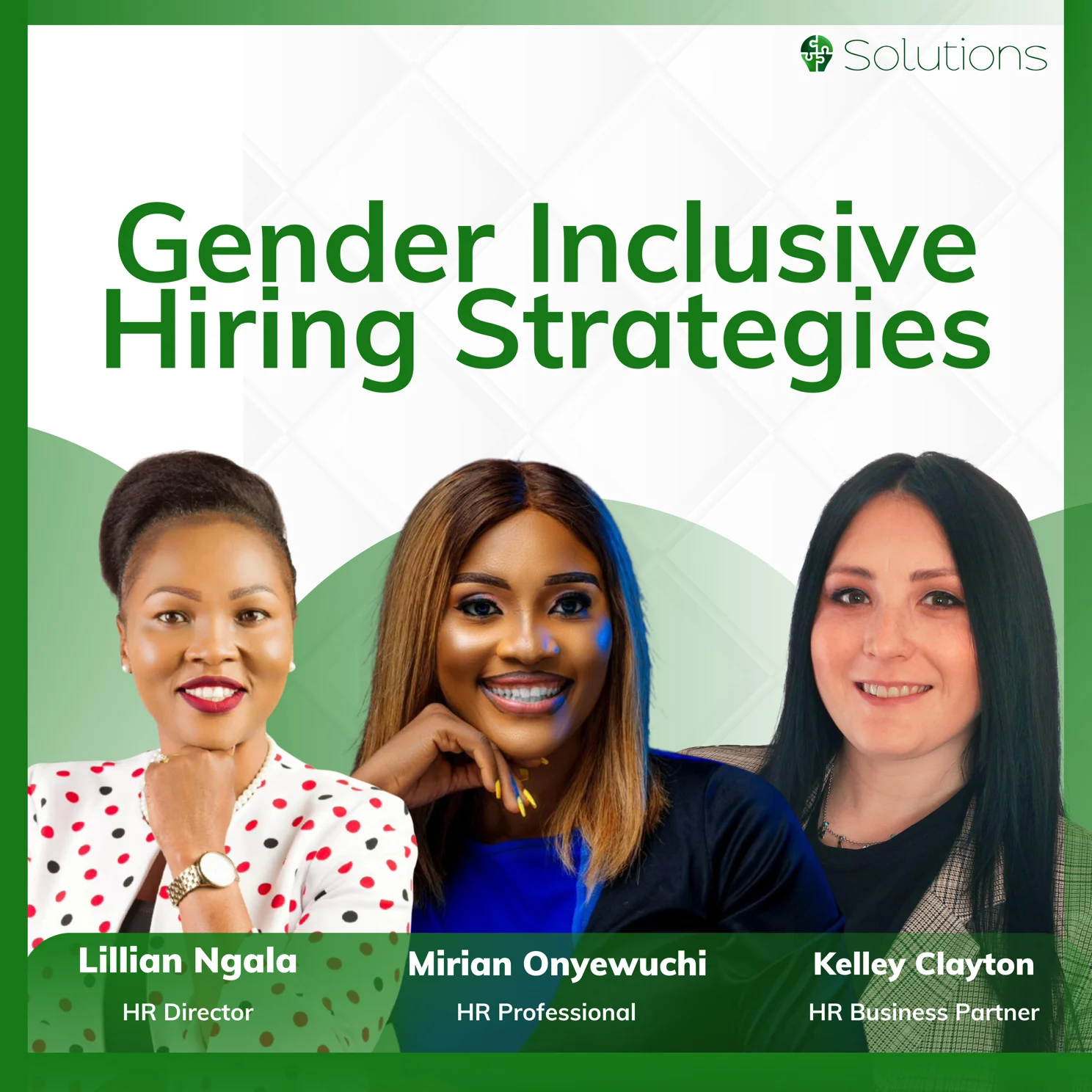Today, fostering an inclusive and diverse workplace isn't just an ethical imperative; it's also a strategic advantage for companies looking to attract the best of the job market. Gender-inclusive hiring stands out as crucial for achieving workplace equity and enabling recruiters to tap into broader, perhaps even new, talent pools.
During a recent masterclass hosted by Spurt! on inclusive gender hiring practises, three distinguished facilitators – Kelley Clayton, Lillian Ngala, and Marian Osasenaga – took the virtual stage to share their expertise on fostering diversity and equal opportunities in the workplace.

Lillian Ngala commenced the event by getting into the concept of "Building an Equitable Gender Culture." She dissected the essence of equitable gender culture, shedding light on the origins of gender bias and its profound impact on those affected. Lillian went on to explore actionable steps for cultivating such a culture, culminating her insights with a resonant quote: "If you play your part… One day we shall all be employees, there shall be no male employee or female employee… just employees."
Kelley Clayton followed with a comprehensive exploration of "Designing Inclusive Hiring Processes." Kelley skilfully guided attendees through the labyrinth of understanding inclusive hiring, outlining key strategies while candidly addressing potential barriers and challenges that organisations might encounter.
Marian Osasenaga concluded the masterclass by spotlighting "Gender-Inclusive Hiring Strategies for Fostering Diversity and Equal Opportunities." With a spotlight on underrepresentation of certain genders across industries, Marian addressed the hurdles in gender-inclusive hiring. She unfolded strategies to surmount these challenges, emphasising the importance of fostering diverse multinational teams and adopting gender-neutral job titles to level the playing field.
By implementing gender-inclusive hiring practises, companies can tap into a wider range of perspectives and experiences, leading to more innovative solutions and better decision-making. Diverse teams are better equipped to understand the diverse needs of a global customer base, and this can translate into improved product development and customer satisfaction.
To adopt gender-inclusive hiring, organisations should start by reviewing and revising their job descriptions to eliminate gender-specific language. This ensures that the language used does not deter anyone from applying due to an unnecessary sense of exclusion. Furthermore, companies should offer diverse candidate slates for all positions, ensuring that interviews consist of individuals from a variety of gender backgrounds.
Transparent and unbiased evaluation criteria are paramount. Implement blind recruitment processes that remove personal information such as names and gender from resumes. Focus on skills, qualifications, and experiences to truly identify the best-fit candidates.
Employee resource groups and mentorship programmes can play a pivotal role in creating an inclusive culture. These initiatives offer networking opportunities and support for individuals of all genders, helping to break down gender-based barriers and create a more cohesive workforce.
In conclusion, gender-inclusive hiring isn't just a checkbox to mark; it's a commitment to embracing the richness of human diversity. By fostering an environment that values all gender identities, companies can harness the power of varied perspectives, leading to greater innovation, improved employee morale, and enhanced business success. As we move forward, let's remember that a workplace built on inclusivity is one where everyone can thrive and contribute their best.



